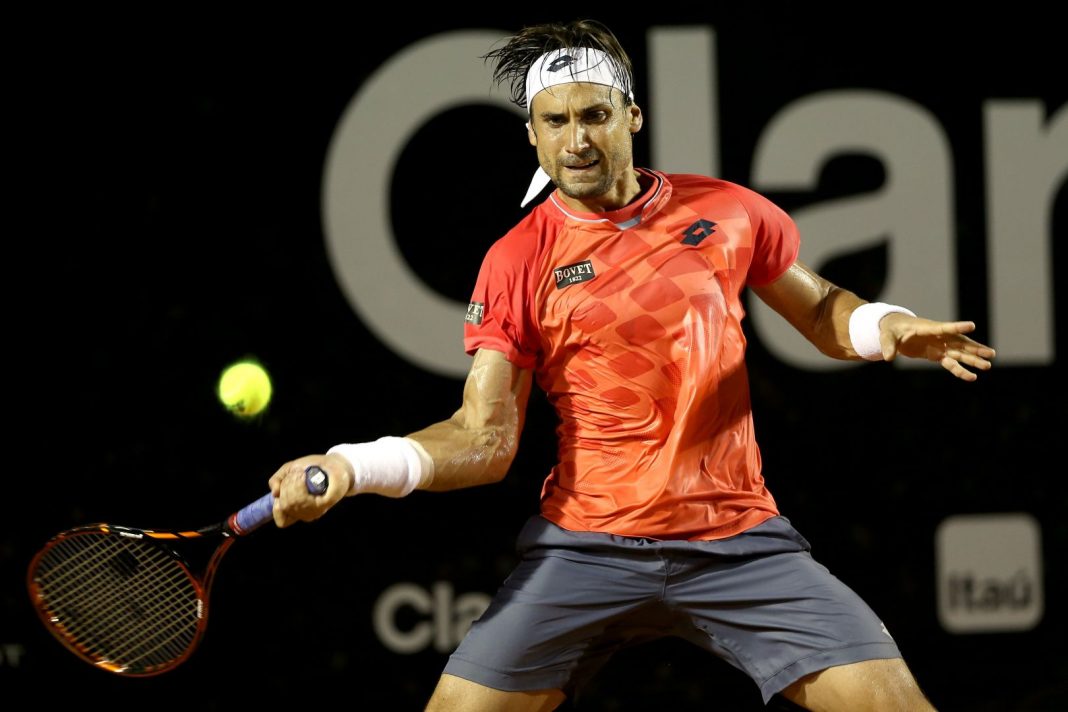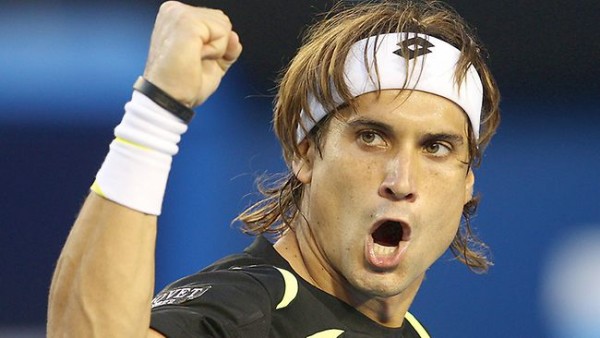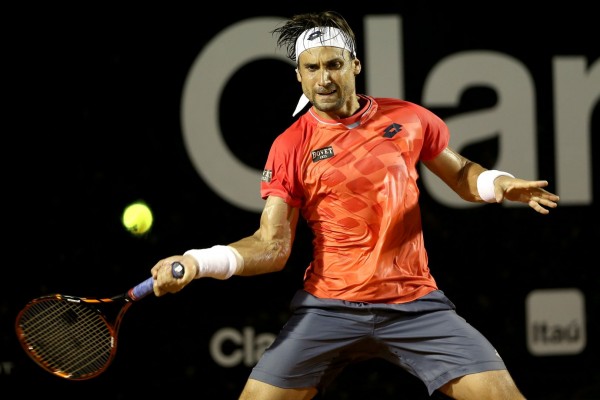
David Ferrer, currently ranked ninth in the world, is a player who you can’t exactly call slumping. He’s spent most of his career ranked outside of the Top 5 and so, as the World No. 9, he’s not exactly off his normal pace. However the Spaniard has not done well in the last year of Grand Slams and it could be that his best tennis is behind him. But even if that is the case then I don’t think that there’s much to complain about in the Ferrer camp as he’s gotten more than his fair share of luck in his career.
When you look at Ferrer’s ranking history what you see is a player who peaked in 2007 and 2008. Starting at the 2007 US Open, Ferrer made the quarters of three straight majors, including a semifinal appearance at Flushing Meadows. Those results helped lunge him into the Top 5 before he dipped back down to the teens for a few years.
The Spaniard, who has won twelve of his twenty-three titles on the clay court surface, then experienced a re-surgence in 2010, re-cracking the Top 10 again in October of that season. His re-peaking is no doubt a testament to his own drive, conditioning, and coaching.
However there is another factor, a major one in my opinion, that probably helped Ferrer in the zero-sum world of ATP tennis, a factor that the Spaniard had no control over: Robin Soderling, a player who easily could have curtailed Ferrer’s clay court results in recent seasons, got diagnosed with mononucleosis and the former Swedish No. 1 has not been able to train properly since.
Soderling, who I consider retired because I refuse to get my hopes up, was the third best clay courter between 2009 and 2011 inclusive. Soderling beat Roger Federer at Roland Garros and he beat Rafael Nadal there too – the only French Open champions of the current era.
The former World No. 4 certainly had Ferrer’s number as the Swede beat the Spaniard in ten of their fourteen meetings. That head-to-head series included their last meeting in 2011 when Soderling demolished Ferrer in the Bsstad final, 6-2, 6-2.
When the Swede played his last match later that year it left a vacancy in the Top 5 on tour that someone not as good would simply have to fill. Ferrer, a lesser clay courter than Soderling and lesser player overall, fit the bill and the Spaniard went on to enjoy the best seasons of his career in 2012 and 2013.
You can call it “shoulda-coulda-woulda” but I don’t think Ferrer could have supplanted Soderling in the Top 5 the good old fashioned way. If Soderling was in all of the twelve tournaments that Ferrer won since the start of 2012 then I think the Spaniard might only have won three or four of them.
That the loss of Soderling made Ferrer who he is today is clear in my mind. It is a lamentable fact for fans of tennis because it also made some important matches kind of boring.
The 2013 French Open final (Nadal vs. Ferrer) is one of the only Grand Slam finals I haven’t tuned into in recent years. Make no mistake, it was because Ferrer was in the final and, in my mind, the outcome of the match was never uncertain.
Ferrer, in 2014, didn’t duplicate his run to the final as Soderling did back in 2010. Rather these are the results that the Spaniard turned in last season in majors:
Australian Open 2015 R16
Roland Garros 2014 Quarterfinalist
Wimbledon 2014 Second Round
US Open 2014 Third Round
Tournament for tournament, Ferrer’s last four Grand Slams have each been worse than the one in the previous year. So much has been made about the Spaniard’s fitness but if he’s not winning the best-of-five-set matches like he used to then perhaps that fitness level is on the decline for the 32 year old.
In 2015 look for Ferrer to continue to make a living in the best-of-three-set tournaments. Of course he’ll take a big win down here and there but the semifinals of majors are nearly out of reach in my view.
Out of reach, unless, of course, some misfortune were paid to one his chief rivals.
2015 projection for Ferrer: ranked 7th to 12th at year’s end with no semifinal appearances in Grand Slams.



